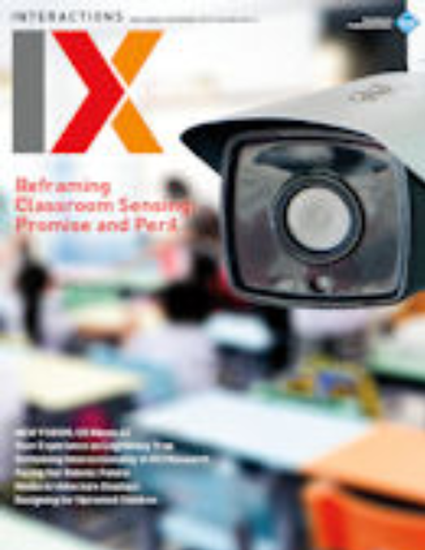
Popular Press
Designing for Uprooted Children: Issues, Challenges, and Opportunities
Interactions Magazine
(2019)
Abstract
Across the world, about 50 million children have been forced out of their homes due to violence, extreme poverty, or natural disasters. While forced child migration is not a new phenomenon, the number of child refugees has more than doubled since 2005. Increasingly this group relies on, and may benefit from, digital technologies throughout their journey of displacement and resettlement.
Given this context, we believe it is important for the human-computer interaction (HCI) community to consider what, if any, role we can or should play to alleviate the difficulties faced by uprooted children and their families. To begin this discussion, we hosted a Special Interest Group (SIG), entitled "Child-Computer Interaction SIG: Designing for Refugee Children" at the 2019 ACM CHI Conference on Human Factors in Computing Systems (CHI 2019) in Glasgow, U.K. In this article, we provide an overview of some of the challenges affecting uprooted children, followed by a summary of the CHI 2019 SIG discussion focused on the issues, challenges, and opportunities, relevant to the HCI community.
Keywords
- human-centered computing,
- social and professional topics,
- human computer interaction (HCI),
- user characteristics,
- computing education,
- informal education
Disciplines
Publication Date
November, 2019
DOI
10.1145/3360339
Publisher Statement
For a complete list of authors, please see article.
Citation Information
Antle, Alissa N.; Hourcade, Juan Pablo; Fails, Jerry Alan; Garzotto, Franca; Giannakos, Michail; Markopoulos, Panos; . . . Read, Janet C. (2019). Designing for Uprooted Children: Issues, Challenges, and Opportunities. Interactions Magazine, 26(6), 76-79.
